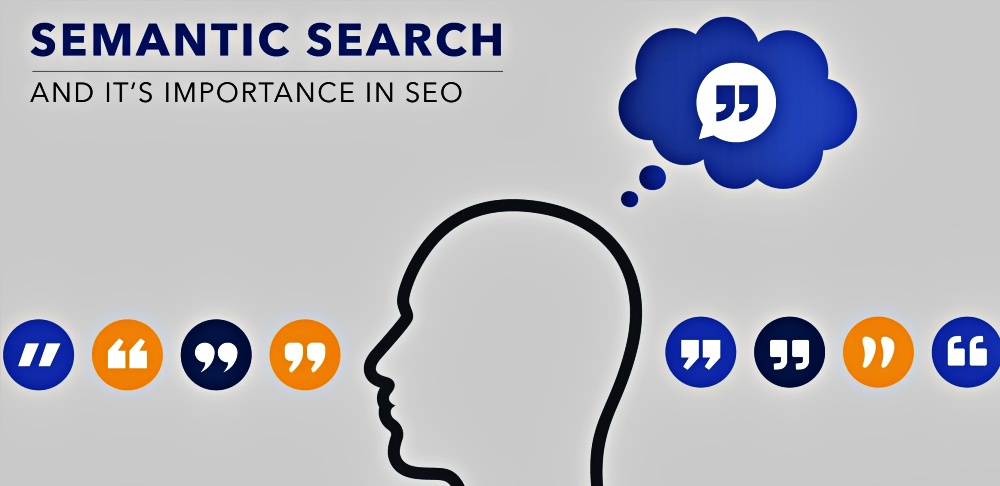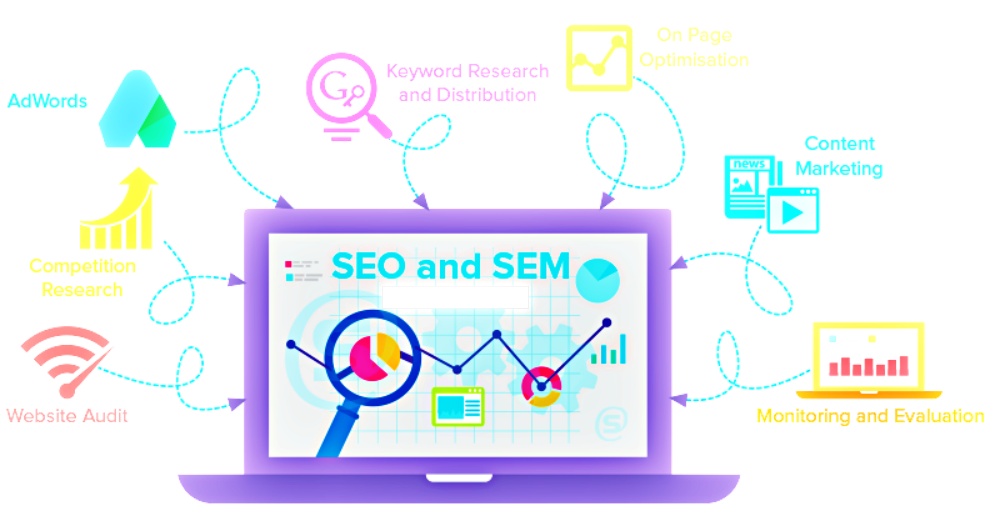SEO isn’t what it used to be. The old tactics of keyword stuffing, link building farms, and ranking hacks are a thing of the past. In 2025 search engines are smarter, and so is your competition. The battleground has shifted from keywords to context, from volume to relevance.
That’s where semantic SEO comes in. Unlike traditional SEO which relies on exact match keywords and backlinks, semantic SEO focuses on meaning, relationships between entities, and user intent.
In this detailed guide, we’ll explore the key differences, why semantic SEO is dominating in 2025, and how you can leverage it to outperform your competitors.

1 What is semantic SEO?
Semantic SEO is the process of optimizing content to make it more meaningful relevant and contextually rich for both users and search engines. It goes beyond individual keywords to consider the relationship between words, concepts, and topics.
Basic components of semantic SEO:
Search intent analysis Understanding why users are searching for a term.
Entity-based SEO Google focuses on topics, not just keywords.
Contextual relevance Ensuring that content answers relevant and follow-up questions.
Topic clusters and pillar pages Organizing content into a thematic structure.
Natural language processing (NLP) Google’s AI understands language better than ever.
2 Traditional SEO What it was and why it’s dying
Traditional SEO focused on keywords, backlinks, and metadata to improve search rankings. While these factors still matter, they are no longer the primary drivers of search visibility.
Weaknesses of Traditional SEO in 2025
Keyword stuffing is penalized Google’s algorithms detect unnatural overuse of keywords.
Ranking volatility Frequent updates make old strategies unreliable.
Search intent matters more Pages with better context rank higher.
Limited AI optimization Traditional methods fail to take advantage of NLP advances.
3 Why Google is prioritizing semantic SEO in 2025

Google’s mission is to provide users with the best possible answers. As AI powered search engines evolve, they will
Recognize synonyms and context rather than relying on exact keywords.
Analyze entire topics rather than single pages.
Identify search intent and adjust rankings accordingly.
Prioritize concise, engaging content over keyword heavy pages.
Algorithms like BERT (Bidirectional Encoder Representations from Transformers) and MUM (Multitask Unified Model) are designed to interpret meaning in a way that humans would. If your content fails to align with intent and context it will struggle to rank
4 Why Traditional SEO is Not Working in 2025
Traditional SEO is becoming less effective in 2025 due to several significant changes in search engine algorithms user behavior and advances in AI. Here are the main reasons why traditional SEO tactics no longer work as well as they used to:
Google’s shift to AI powered search
Google’s Search Generative Experience (SGE) and AI powered ranking algorithms focus on context and intent rather than keyword stuffing.
AI tools like Google MUM (Multi Task Unified Model) analyze multiple types of content (text images videos) to provide direct answers rather than just ranking pages.
Semantic search means that search engines now understand natural language and user intent, rather than just matching exact keywords.
Lack of keyword based optimization
Traditional SEO relies on exact match keywords and backlink building, but modern algorithms prioritize topic relevance and content quality over keyword density.
Google’s AI can rewrite search queries to find the best information reducing reliance on specific keyword matches.
3 Increase in zero click searches
More users are finding answers directly on Google through featured snippets knowledge panels and AI generated summaries.
Traditional SEO that aims to rank first is now less effective because users don’t have to click through websites for answers.
Voice search and conversational queries
More searches are happening through voice assistants like Google Assistant Siri and Alexa. Questions are now longer and more conversational making old keyword based SEO less effective. Websites that are optimized for conversational content and FAQ style formats perform better.
The Declining Importance of Backlinks
Google’s algorithms are devaluing backlinks in favor of content authority and relevance. AI generated content and high quality user engagement metrics (time on page interactions) now play a bigger role in rankings.
EEAT (Experience Expertise Authenticity Trustworthiness)
Google prioritizes trustworthy and expert written content over blogs optimized for general SEO. AI can detect low quality content that is just full of keywords and backlinks but has no real value. Authentic human written content with expert insight is superior.
Social Media and Alternative Search Engines
Younger audiences are using TikTok YouTube and Reddit for search instead of Google. Traditional SEO doesn’t work well on these platforms requiring a shift to content based and engagement focused strategies.

5. How to Implement Semantic SEO A Step by Step Guide
1. Do deep keyword and intent research.
Use tools like Ahrefs SEMrush and the Google NLP API.
Identify LSI (Latent Semantic Indexing) keywords related to your main topic.
Understand search intent informational navigational transactional commercial.
2 Optimize for user intent and context
Create content that answers multiple relevant questions.
Create long form well structured articles with in depth insights.
Use FAQs schema markup and natural language to drive understanding.
3 Create topic clusters and pillar content
Pillar pages Broad content that covers a key topic. Cluster pages Supporting articles that link to the pillar page. Internal linking strategy Linking related content for better navigation.
4 Use structured data and schema markup.
Implement FAQ schema How to schema and Article schema. Validate structured data with Google’s Rich Results Test.
5 Optimize for featured snippets and voice search
Shorten answers to common questions. Use bullet points lists and tables. Structure content with H2 and H3 subheadings that match user queries.
6. Improve UX site speed and mobile optimization
Ensure fast-loading pages with a Core Web Vitals score of 90. Improve mobile friendliness using responsive design. Provide a clean distraction free reading experience.
6. Avoid common semantic SEO mistakes.
Forgetting search intent Don’t just optimize for keywords optimize for user intent.
Ignoring structured data Missing out on rich results and better rankings.
Thin content Google prefers comprehensive, high-quality content.
Ignoring internal linking A weak content structure reduces authority.
Poor UX High bounce rates and slow page speed hurt rankings.
7. The Role of AI and NLP in Semantic SEO
With AI powered updates, Google now
Understands conversational search queries.
Detects content relevance and user sentiment.
Ranks content based on engagement, readability, and depth.
Using AI based tools like Surfer SEO Frase and Clearscope can help fine tune content for optimal semantic relevance.
Comparison Semantic SEO vs Traditional SEO
Traditional SEO primarily focuses on optimizing web pages using exact match keywords and backlinks to rank higher in search results. This method heavily relies on keyword density meta tags and link building strategies to improve visibility. However, it often ignores the context and intent behind search queries, leading to content that may not fully satisfy user needs. Traditional SEO is also more vulnerable to search engine algorithm updates, meaning that ranking fluctuations are common whenever Google updates its ranking factors. Additionally traditional SEO tends to prioritize standalone articles that target specific keywords rather than creating a network of interconnected content. User experience and engagement metrics such as time on page or interaction levels receive less emphasis in this approach.
On the other hand, Semantic SEO is designed to align with modern search engine algorithms that prioritize context, meaning, and user intent over simple keyword matching. Instead of focusing solely on keywords, Semantic SEO structures content around topic clusters and uses structured data to help search engines understand relationships between concepts. This approach makes content more future-proof and AI friendly ensuring better adaptability to updates and changes in search algorithms. Additionally Semantic SEO places a strong emphasis on user experience ensuring that content is engaging, comprehensive, and aligned with search intent. By leveraging semantic relationships and contextual relevance Semantic SEO provides more accurate and meaningful search results ultimately leading to improved rankings and long term visibility.
Frequently Asked Questions on Semantic SEO
Q1 Is Semantic SEO replacing traditional SEO?
No but Semantic SEO improves and modernizes traditional methods to match Google’s evolving algorithm.
Q2 What tools help with Semantic SEO?
Google NLP API Ahrefs SEMrush Surfer SEO and Frase are some of the top tools.
Q3: How does Semantic SEO impact voice search?
Voice search relies on natural conversational questions making semantic optimization essential.
Q4: How do I build my content for semantic SEO?
Use pillar pages topic clusters and FAQs with structured data for better indexing.
Mastering semantic SEO for long-term success
The future of SEO is about meaning, context and intent. If you want to stay ahead in 2025 it’s time to do more than just keywords.
